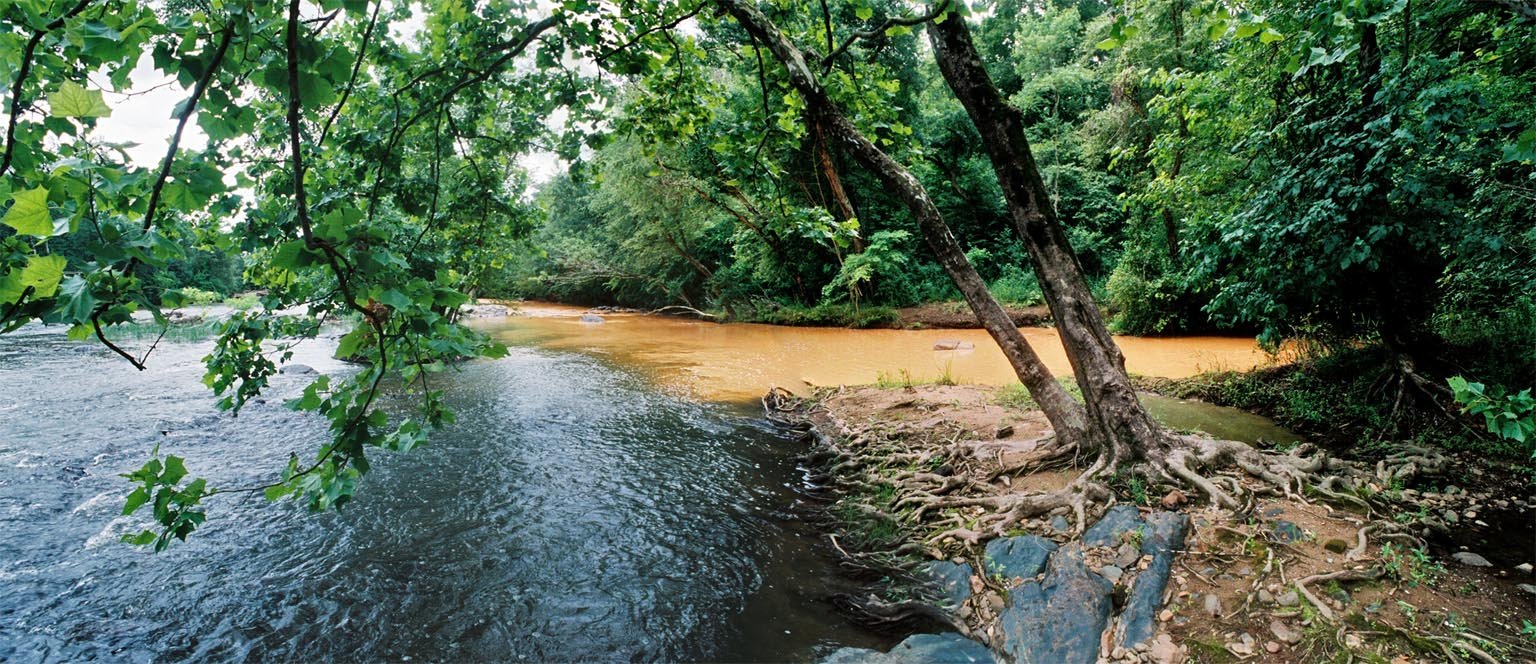
Sediment Pollution
Muddy Water Watch Project
As our watershed continues to be developed at an alarming rate, the Haw and its tributaries are facing the negative impacts of sediment pollution. Increased development means an increase in construction stormwater runoff, which is the leading water pollution problem in the nation, according to a 2008 report from the E.P.A.
To protect our watershed from this pollution problem, we are re-launching our Muddy Water Watch project, partnering with county sediment and erosion control officials to document and report potential sediment violations. Join us! Read more below. Photo above of Dry Creek into Haw, photo by Jerry Markatos.
The movement and settling of sediment in water known as sedimentation is a natural and important feature of the Earth system, but human activity has fundamentally altered this global cycle. Fluvial sediment delivery, that is sand, silt or clay transported and deposited by streamflow, increased 215% between 1950 and 2010, while the amount reaching the world’s oceans decreased by 49%. Climate change is also impacting the sediment cycle through temperature and precipitation changes, desertification, intensifying forest fires and sea level rise.
Sediment pollution blocks drainage systems which can increase flooding and reduce traffic safety and land disturbances can directly affect homes and private property, weakening structural foundations and inundating yards and gardens. Water quality impacts of increased sedimentation are well-documented, leading to habitat loss for fish and macroinvertebrates as channel beds fill with sediment while suspended particles decrease light availability and water clarity, disrupting freshwater fish feeding and schooling as well as damaging organs and tissues. Sediment in water runoff is also a primary carrier for contaminants like oil, grease, heavy metals, dioxins, nutrients, pesticides, flame retardants, with “legacy contaminants” such as DDT, PCBs and chlordane found in stream, river and lake bed sediment.
With an unprecedented wave of development and increase in industrial activity across the state currently underway and projected for many years to come, monitoring, reporting and prevention of sediment pollution is critical to protecting our watersheds. In the first quarter of 2023, HRA has been tracking sedimentation in streams in Chatham County, particularly around the new Vinfast facilities and Brickhaven mine tracts. Staff have done aerial surveys and stream traversal to locate specific pollution sources and monitored at roadside-accessible sites. Turbidity is a measurement of the level of clarity or transparency of a fluid, and is used as a key metric for water quality. More particles or sediment in water means higher turbidity, which is indicated with Nephelometric Turbidity Units or NTUs. Sampling sites along Gulf Creek showed turbidity levels of 127 NTU up to 364 NTU. At a site for Shaddox Creek in the same period, turbidity was 60.9 NTU. The NCDEQ water quality standard for turbidity in these waters is ≤ 50 NTU with lakes and reservoirs ≤ 25 NTU. HRA is also actively monitoring sites across Alamance County, with particular attention to new residential and commercial developments. The context for Alamance differs from most of the other counties in the Haw Watershed as the county does not have a Local Sediment and Erosion Control program, so authority for enforcing compliance with DEQ standards falls to the state or the City of Burlington in that jurisdiction.


